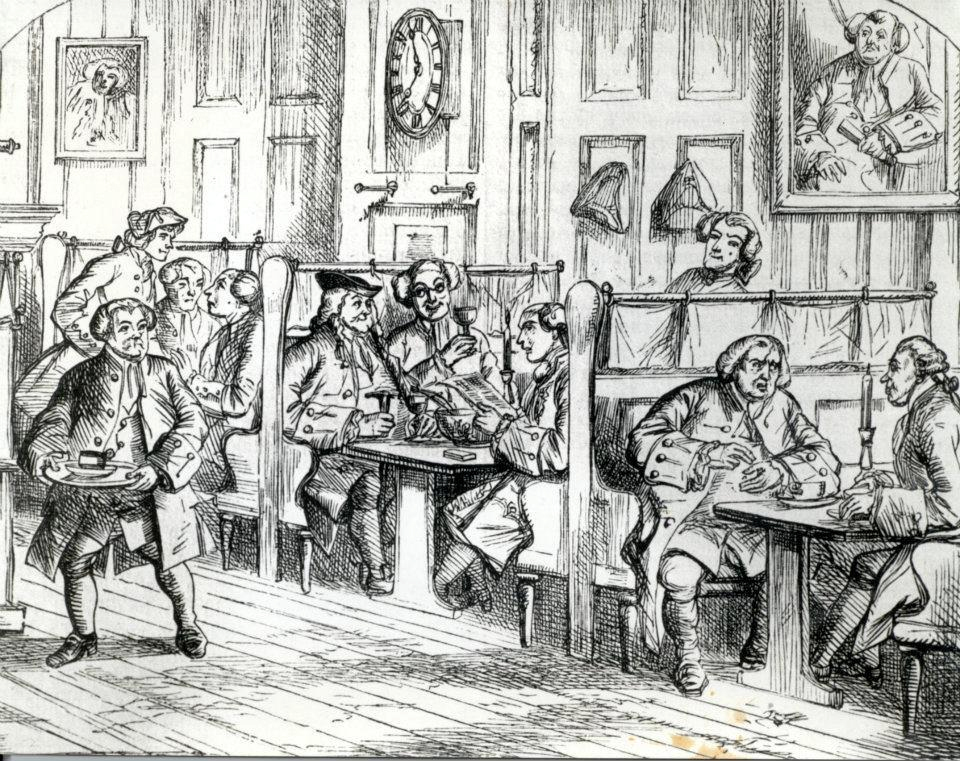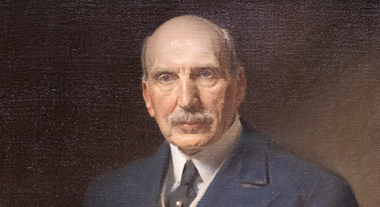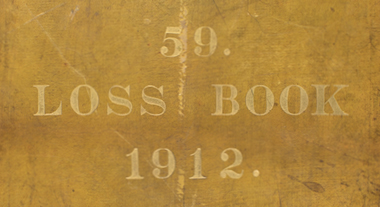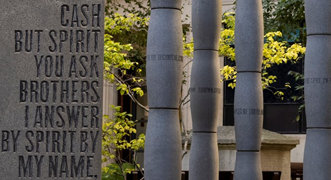Coffee houses
In the London of the 1600s, business was done at the Royal Exchange, but news and information were gathered in the sociable atmosphere of the coffee houses. By 1663, over 80 coffee houses could be found within the old Roman walls of the City of London. Inside, entrepreneurs, writers and poets would drink, think and talk into the night.
Edward Lloyd (1648 – 1713) came to London, it’s thought, from Canterbury, arriving with his wife Abigail in about 1680 at the age of 32. Their eldest son Edward had just died, and their third daughter Mary had just been born.
The City at this time consisted of two worlds: ships and money. Both converged in a tiny area between the Tower of London and Thames Street, close to the Navy Office in Seething Lane, where Samuel Pepys had worked. Each coffee house had a specialist interest, and it was here, in now-lost Tower Street, that Lloyd opened his own coffee house, and began attracting all those concerned with shipping. The place became a favourite haunt of ship’s captains, merchants and ship owners.
The power of knowledge
What made this emporium stand out is that Lloyd understood the vast importance of information to business. He went out of his way to supply it, publishing a regular sheet of intelligence on ships, cargo and foreign events, and establishing a network of correspondents in ports across Europe.
The first mention of Lloyd’s is a reference in the London Gazette of 1688, when Lloyd was 40, announcing a reward for information about five stolen watches.
Business booms
By 1691, business was booming, and Lloyd moved to 16 Lombard Street, across from the Royal Exchange and in the heart of the merchants’ quarter. The interior would have been a large room with sanded floor, a bar, and tables with chairs and benches. Lloyd’s staff of three men and two girls dispensed coffee, tea and sherbet, a fruit punch, and saw that the regulars had pens, ink and paper.
Lloyd by now hosted regular candle auctions, a pulse-racing business where bidding on ships’ cargoes began when a stub of candle was lit; the successful bid was the last before the candle guttered. Lots included ‘a parcel of Turkish coffee’ and ’53 hogshead of extraordinary neat Red French wines’.
A man of wealth and reputation
Lloyd had made a name for himself. His high standing in the community showed in his election as a sidesman – greeting the congregation - at Lombard Street’s St Mary Woolnoth. He became a Constable and Questman, an early form of neighbourhood watch, and was later proposed as a councillor.
His failure to be elected was probably due to ill health. Early in 1713, Lloyd made a will assigning the coffee house lease to his head waiter, William Newton. Two days later, Newton married Lloyd’s youngest daughter, 19 year old Handy. In another fortnight, Lloyd was dead.
It was rare at that time for newspapers to mention the deaths of private citizens, but the Flying Post did so. ‘On Sunday last Died Mr Lloyd the Coffee-Man in Lombard Street.’
For Lloyd, who gave everything to his illustrious meeting place, that would have been enough. How could he guess at what would follow, and that a world-renowned force for progress, innovation and security had been founded in one small shop?



